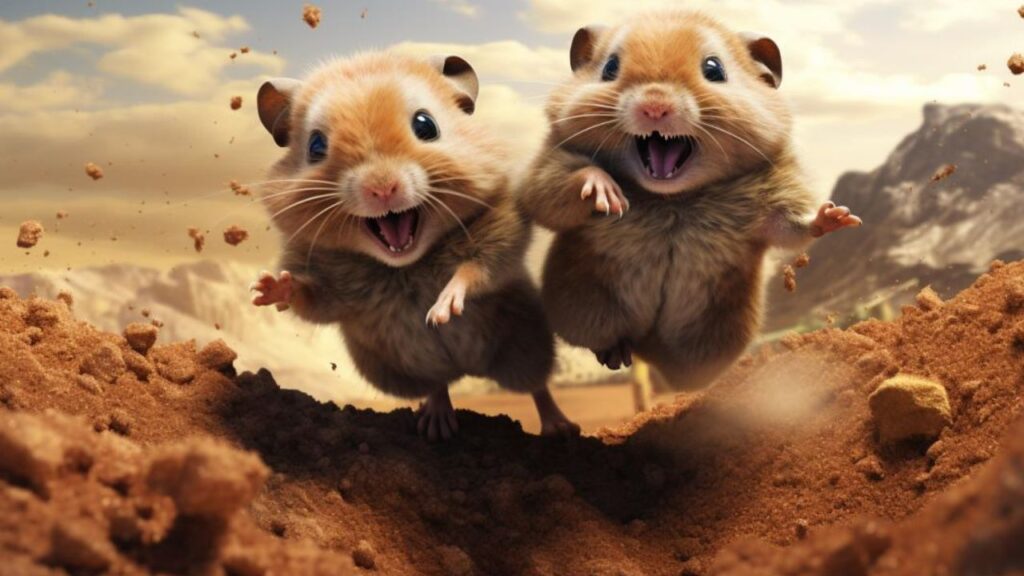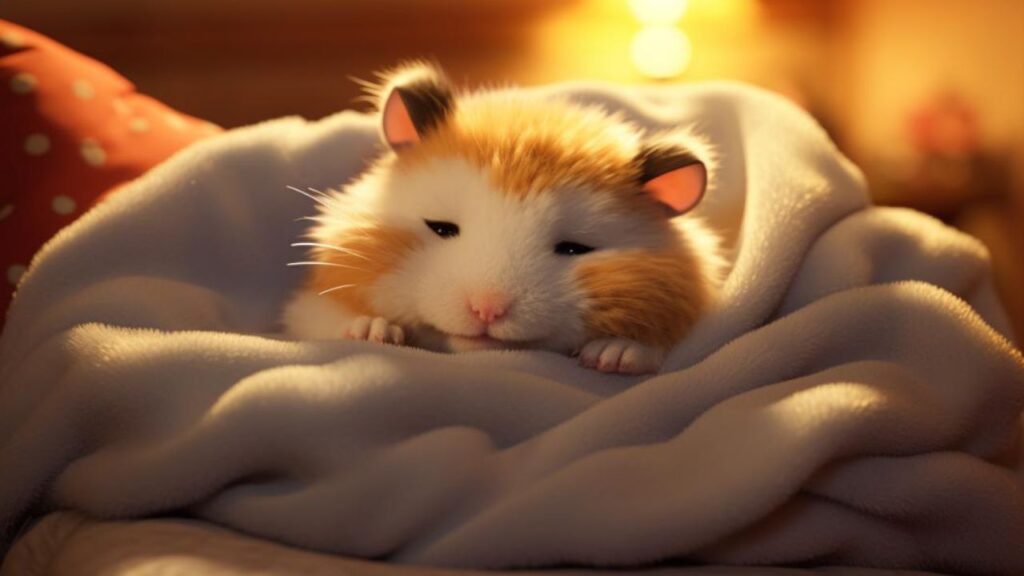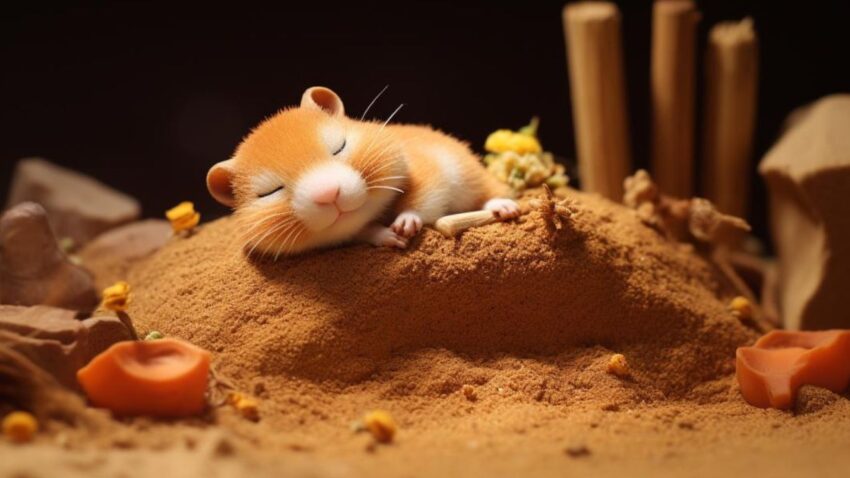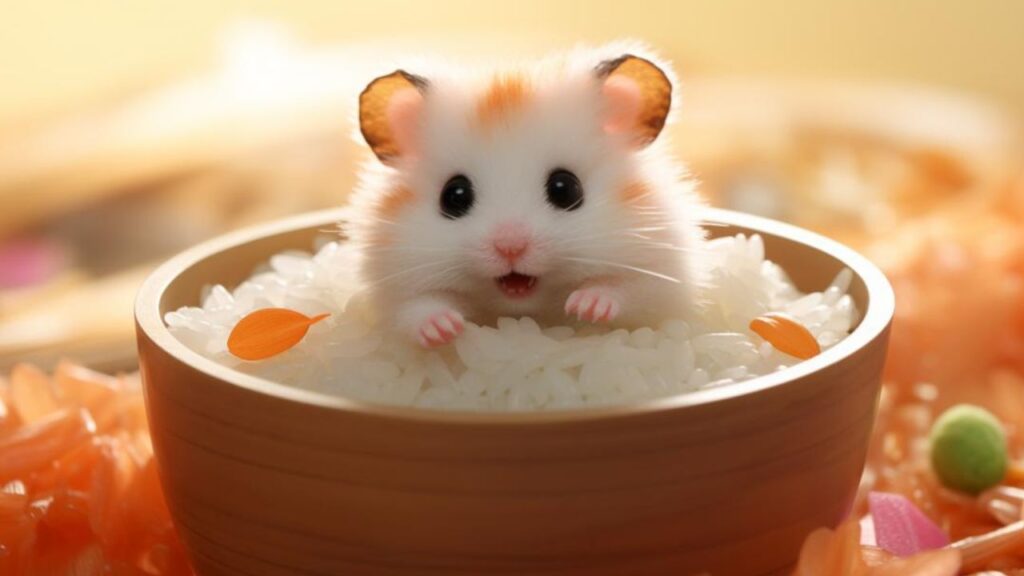TL;DR Summary
Coco peat can be used safely for hamsters if it is free from chemicals and dyes, and is maintained properly to prevent mold and dampness. However, due to the risk of ingestion and potential gastrointestinal blockages, it’s crucial to monitor your hamster’s interaction with this bedding. While coco peat offers good absorbency and a natural environment for burrowing, regular cleaning and careful observation are essential to ensure it remains a safe bedding choice. Always prioritize the health and comfort of your hamster when selecting bedding, and remember, a happy hamster is a wheel-y happy you!
In the enchanting world of hamster care, selecting a habitat that closely mirrors their natural environment is not just about comfort—it’s about health. The foundation of any hamster home is the substrate or bedding, which plays a multifaceted role in their daily life. It’s where they burrow, nest, and even forage, making it crucial to choose a substrate that is safe, absorbent, and comfortable for these tiny foragers.
Coco Peat: The Growing Bedding Trend
Among the myriad of bedding options, coco peat has emerged as a popular choice. Derived from the fibrous husk of the coconut, coco peat is touted for its natural absorbency and eco-friendly credentials. But with its rising popularity comes the need for a critical assessment: is coco peat a suitable and safe option for hamster bedding?
The Bedding Dilemma: Comfort vs. Safety
While comfort is a significant factor, safety remains paramount. As hamsters are known to nibble on their bedding, the substrate must be non-toxic and digestible. Additionally, it should be free from dust and other irritants that could harm their sensitive respiratory systems. With coco peat’s organic origins, it raises questions about its safety profile, especially considering the unique needs of these small creatures.
What is Coco Peat?

In the quest for sustainable and effective bedding for our hamster habitats, coco peat has taken the pet world by storm. But what exactly is this material that’s finding its way into our furry friends’ homes?
The Origins and Uses of Coco Peat
Coco peat, also known as coir or coconut peat, is a byproduct of the coconut industry. Once the outer green husk of the coconut is removed, what remains is the fibrous layer that coco peat is derived from. This fibrous material is then processed and broken down into a fine, peat-like substance.
Commonly used in gardening, coco peat is valued for its ability to retain moisture while also providing good drainage and aeration. It’s often used as a soil amendment or, more recently, as a standalone planting medium.
Properties Impacting Hamster Health
When considering coco peat for hamsters, several of its properties warrant attention:
- Absorbency: Coco peat’s high absorbency can keep the cage dry and comfortable for hamsters, reducing the risk of bacterial growth and skin irritations.
- Dust Levels: Being a low-dust material, coco peat is less likely to cause respiratory problems, a common concern for hamster health.
- Digestibility: If ingested, the natural fibers of coco peat are less likely to cause internal blockages compared to synthetic bedding materials.
- Chemical-Free: Pure coco peat is free from chemicals and dyes, making it a safer choice for the sensitive hamster.
However, not all coco peat products are created equal. Some may be treated with chemicals or may contain additives that can be harmful to hamsters. Therefore, it’s crucial to source coco peat that is specifically marketed as pet-safe and free from any additives.
Evaluating the Safety of Coco Peat for Hamsters

When it comes to creating a safe and nurturing environment for our hamsters, the choice of bedding material is a decision that should be made with careful consideration. Coco peat, with its burgeoning popularity, demands a thorough evaluation to ensure it aligns with the health needs of these small pets.
Physical and Chemical Characteristics of Coco Peat
Coco peat is known for its:
- Absorbency: Its high capacity to absorb water can help keep a hamster’s living area dry, reducing the risk of skin infections and promoting a clean environment.
- Texture: Soft and granular, coco peat can provide a comfortable surface for hamsters to walk on, which may be beneficial for their delicate feet.
- Density: The dense nature of coco peat allows for effective burrowing behavior, which is essential for hamster enrichment and stress relief.
Chemically, natural coco peat is:
- pH Neutral: This makes it less likely to irritate a hamster’s skin or eyes.
- Low in Salts: High-quality coco peat is washed to reduce salt content, making it more suitable for hamster bedding.
- Free from Additives: Ideally, coco peat for hamsters should be devoid of fertilizers or other chemical treatments that can be toxic if ingested.
Potential Risks and Benefits in Hamster Enclosures
Risks:
- Ingestion: While coco peat is generally safe if ingested in small quantities, it could potentially cause gastrointestinal blockages if consumed in large amounts.
- Quality Variance: The safety of coco peat largely depends on its sourcing. Low-quality coco peat may contain pathogens or contaminants that could harm a hamster.
- Mold Growth: If not changed regularly or if it becomes overly saturated, coco peat could harbor mold, posing a risk to hamster respiratory health.
Benefits:
- Natural Environment: Coco peat can mimic the natural burrowing environment of wild hamsters, potentially increasing their sense of security and well-being.
- Dust-Free: The low dust nature of coco peat is particularly beneficial for hamsters, as it reduces the risk of respiratory distress.
- Eco-Friendly: For owners concerned about sustainability, coco peat is a renewable resource, which makes it an environmentally conscious choice.
Whisker Tips: Using Coco Peat Safely

Embracing coco peat as a bedding option for hamsters requires more than a cursory understanding of its benefits—it demands a commitment to ensuring its safe use. Here are some essential ‘Whisker Tips’ for pet owners contemplating coco peat for their hamster’s enclosure.
Selecting and Preparing Coco Peat
Choose the Right Product
- Pet-Safe Certification: Opt for coco peat that is marketed as safe for pets. This ensures that it has been processed without chemicals harmful to hamsters.
- Organic and Natural: Seek out organic coco peat products, which are less likely to contain synthetic additives or residues.
Proper Preparation
- Rinsing: Even if the coco peat is pre-washed, giving it an additional rinse can help remove any residual dust or particles.
- Drying: Before placing it in the cage, ensure that the coco peat is completely dry to prevent mold growth and maintain its absorbency.
- Sifting: To avoid any sharp fibers or large chunks that could harm your hamster, sift the coco peat through a fine mesh.
Best Practices for Monitoring Hamsters with Coco Peat Bedding
Observe Behavior
- Ingestion: Watch for any signs that your hamster is eating the bedding, which can lead to digestive issues.
- Burrowing and Nesting: Ensure your hamster is comfortably burrowing and nesting in the coco peat, as this is an indicator of their comfort with the substrate.
Maintain Cleanliness
- Regular Changes: Replace the coco peat frequently to prevent the buildup of waste and to discourage the growth of bacteria and mold.
- Spot Cleaning: Perform daily spot cleaning to remove soiled areas and replenish with fresh coco peat as needed.
Health Checks
- Respiratory Health: Monitor your hamster for any signs of sneezing, wheezing, or labored breathing, which could indicate an allergic reaction or respiratory issue.
- Skin and Paws: Regularly check your hamster’s skin and paws for any signs of irritation or injury, which could arise from the bedding.
Alternatives to Coco Peat for Hamster Bedding

While coco peat can be a suitable bedding option for some hamster owners, it’s important to recognize the variety of alternatives available that may be more familiar or preferable for different reasons. Each type of bedding material comes with its own set of benefits and considerations.
Commonly Used Bedding Materials for Hamsters
Paper-Based Bedding
- Description: Soft, absorbent, and typically made from recycled paper, this bedding is widely recommended for small animals.
- Comparison: Unlike coco peat, high-quality paper bedding is almost always dust-free and poses no risk of ingestion-related health issues.
Aspen Shavings
- Description: A wood-based bedding option, aspen shavings are a popular choice due to their natural origin and absorbency.
- Comparison: Aspen is safe for hamsters as it doesn’t contain the aromatic oils found in pine or cedar shavings, which can be harmful.
Pelleted Bedding
- Description: Often made from wood or paper, these pellets are designed to absorb moisture and odors effectively.
- Comparison: Pellets are more dense and less comfortable for burrowing than coco peat but offer superior odor control and are easy to clean.
Fabric Bedding
- Description: Some owners opt for washable fabric bedding, which can be soft and cozy for hamsters.
- Comparison: Fabric requires regular laundering and doesn’t offer the same burrowing experience as coco peat but is reusable and eco-friendly.
Safety and Suitability for Hamsters
When assessing the safety and suitability of these bedding materials compared to coco peat, consider:
- Digestive Safety: Materials like paper-based bedding and aspen shavings are less likely to cause digestive blockages if ingested.
- Respiratory Health: Paper and aspen options are typically dust-free, reducing the risk of respiratory issues.
- Environmental Enrichment: Coco peat provides an excellent burrowing medium, which is essential for hamster enrichment. However, paper-based bedding can also offer a similar experience with proper layering.
- Ease of Maintenance: Paper-based bedding and pellets are easier to spot-clean than coco peat, which may require more frequent full cage cleanouts due to its high absorbency and potential for mold growth if not maintained properly.





